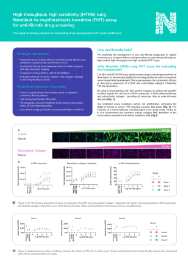Quantitative Fibroblast-to-Myofibroblast Transition (FMT) studies
The problem and data requirement
Our client wished to determine the effect of three compounds on Fibroblast-to-Myofibroblast transition to determine their anti-fibrotic properties. They were looking for a supplier who could perform high content imaging (HCI) for the analysis.

Solution
Step 1:
Our experts worked with the customer to understand the problem
The client wished to obtain detailed insights into the anti-fibrotic properties of their compounds including quantitative dose responses and how each compound affected alpha-smooth muscle actin and extracellular collagen I deposition using an FMT assay
Step 2:
We designed a study protocol and design that efficiently provided data of value
The experimental plan involved testing the effect of three compounds on simulated primary lung fibroblasts. The fibroblasts were exposed to the compounds prior to activation by external stimuli to reconstitute fibrotic disease. The results were analysed by High Content Imaging (HCI) quantifying the expression of extracellular collagen I and alpha-smooth muscle actin expression.
Step 3:
From initiation to data in just over one month
The study includes the experimental phase, data processing and analysis and presentation of a data summary to the client.
DATASET: 3 test articles, 3 positive controls, 10 conditions per test article, 6 technical replicates per condition. Each data point will be acquired in triplicate and repeated with primary fibroblasts isolated from 3 healthy donors.
The experiment was carried out in 384-well plates and for each data point, alpha-smooth muscle actin and collagen I deposition was quantified by immunofluorescence
The study containing over 1000 data points, was completed in just over a month post contract agreement.
Step 4:
We deliver a detailed report with reliable dataset
We delivered a robust dataset which contained, raw and normalised data, statistical analysis, including representative immunofluorescence images to the customer.
Outcomes for the client
We consulted with our client on the interpretation of the data and a full report was drafted containing all the requested information.




